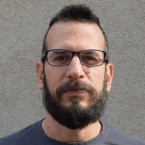Storytelling in games is in a strange spot right now.
So claims Nyamakop co-founder and creative director Ben Myres. The crux of his session on mechanical motifs stemmed around a common trend in video game narratives.
“Cinema, novels, ballet and theatre all do things that are unique to the medium,” said Myres. “Games don’t do that. We don’t talk enough about the craft of making mechanics and narrative cohere.”
That’s where motifs come in - toying with the mechanics of the game to emphasise or subvert the narrative intent. Myres cited games like Terry Cavanagh’s Don’t Look Back, which retells the Greek myth of Orpheus and Eurydice by turning an entire direction into an instant fail state halfway through the game.
Similarly, Florence uses a jigsaw puzzle mechanic throughout its entirety, only to subvert its play at the last minute, while Brothers: A Tale of Two Sons plays with the physicality of its controller to harrowing effect.
But more often than not, games use template interactivity that often clashes with the narrative - ludo-narrative dissonance discourse is drawn out, but it has a point when games continue to use large gunfights to tell personal stories.
Even in shooters, though, games miss the mark by treating narrative and moment-to-moment play as entirely separate entities.
Myres elaborated this point - and ultimately, wraps up the power of motifs - by talking about Call of Duty: Advanced Warfare’s infamous “Press F to pay respects” moment.
“Here, they just make you press a button to pay respects," Myres explained.
"Your game is about shooting - in American military funerals, they have a thing called the 21 gun salute. It’s right there, it’s one-to-one. It’s shooting.”












